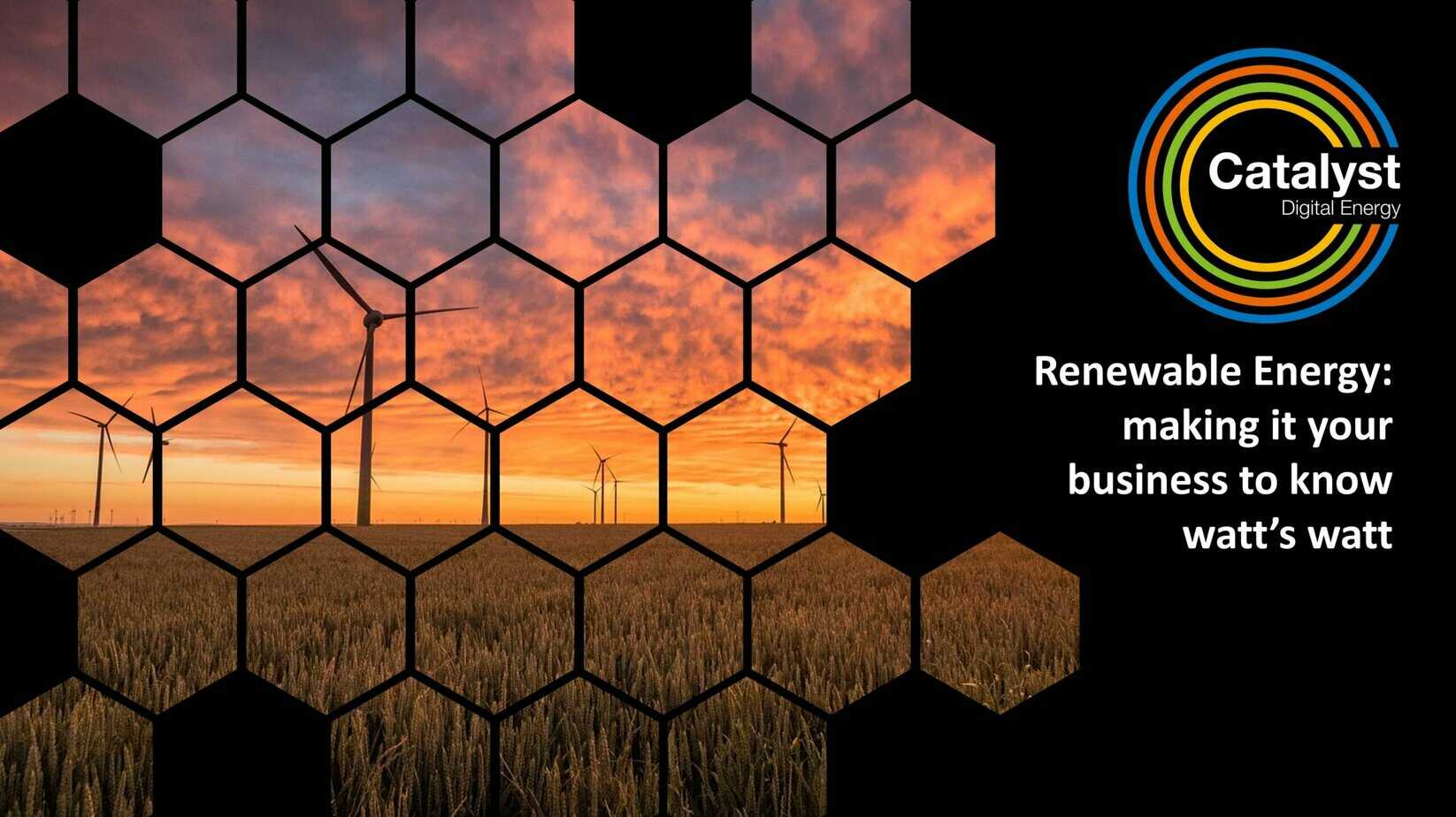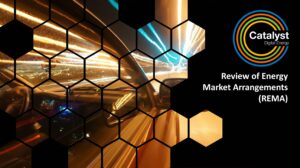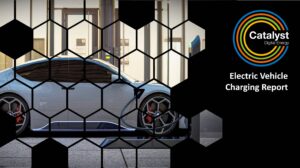Renewable Energy SourcesRenewable Energy: making it your business to know watt’s watt

Sustainable Energy Sources
Through various renewable energy sources, the UK has committed to achieving net zero by 2050 as per the Paris Agreement – and you’ve decided to decarbonise your business ahead of the legal target. You’re ready to embark on the journey… but where to start?
Perhaps you’ll begin by shaping the conversation, by sharing your vision, by setting the tone for your people, and by demonstrating to your partners that you’re ahead of the curve when it comes to pursuing your net zero goals.
Then it’s a case of drawing up a list of clear objectives, all underpinned by a robust understanding of your baseline carbon emissions – because you know that any credible plan is anchored in understanding your carbon footprint, especially your Scope 3 emissions.
You’ll interrogate the numbers and identify the most obvious ‘low hanging fruit’ inefficiencies where you can score some quick wins. You’ll harness all the data available to you, and use it to inform the development of your net zero plan of action.
You’ll set the date – perhaps tentatively – when your business will become officially net zero, and you’ll establish achievable targets to keep your business on track on its carbon reduction journey.
And as part of this process – possibly the most important piece of the jigsaw – you’ll address the challenge of how you’re planning to meet the future energy requirements of your business. No mean feat given that the decisions you make today around decarbonisation and sustainability must be aligned with the commercial imperatives of your business and represent a future-proof investment for the years ahead.
Inevitably, you will have questions: When it comes to energy supply, what options are available to me? Which of the renewable energy sources might offer a best fit for my business? What are the advantages of renewable energy compared to non-renewable energy? What technology is involved in switching to renewable energy? What will be the financial impact on my business of switching to renewable energy within the schedule I’ve set? How can my business leverage positive value from making the switch to renewable energy before the competition achieves it first?
What exactly is meant by renewable energy
But first, the obvious question (and the subject of this blog)… What exactly is meant by “renewable energy”? Essentially, renewable energy is any energy that’s derived from the earth’s natural resources such as sunlight and the wind. Naturally replenished, and much less harmful to the environment, renewable energy is an alternative to the traditional energy that is created from fossil fuels, eg coal and oil – resources which are finite and which are gradually being exhausted.
According to the Government Energy Trends Report 2022, in Quarter 2 (2022), renewable electricity generation was 30.5 TWh, 12% up on the same quarter in 2021, in part due to an increase in wind generation (up by 42%).
Renewables share of electricity generation was 38.6% in Quarter 2 (2022), an increase from 37.% in 2021, but still lower than fossil fuels’ share at 41.9%.
Meanwhile, renewable capacity stands at 3.2 gigawatts – a rise of 6.5% compared to 2021.
Back in 2021, the International Energy Agency published Net Zero by 2050: A Roadmap for the Global Energy Sector – which states that 90% of electricity generation globally will come from renewable sources in 2050, with solar and wind being responsible for 70%.
Solar Energy
Solar energy is perhaps the most recognised of all renewable energy sources – not least because solar panel installations on our homes across our towns and cities are an increasingly common sight.
Solar power is derived by harvesting energy from direct sunlight and converting it using photovoltaic (PV) systems into electricity. In 2022, solar accounted for 6.4% of the renewable energy share of electricity generation, a small but gradually increasing proportion of the UK’s overall energy mix.
From a business owner’s perspective, the primary benefit of solar energy rests in the limitless supply of sunshine – free at source. Its boundlessness, however, is dependent on the weather and the hours of sunshine available.
It won’t come as a surprise to learn that sunny Cornwall is the top performing local authority in terms of solar PV energy generation with 21,021 sites, making up most of the county’s 21,482 renewable energy sites across all the other various technologies.
The county also tops the league in the amount of solar energy these sites generate.
In the short term, solar PV energy could reduce energy bills, and potentially even eliminate them entirely in the longer term. What is more, government incentives for businesses that are considering investing in solar energy might make the proposition more attractive. But therein lies the rub. The upfront cost of solar energy installations represents a significant investment – costs which are invariably passed on to consumers, which might prove enough to put some business owners off the idea altogether.
Geothermal Energy
Sometimes included within the category of solar, Geothermal heat relates to the heat that is trapped beneath the earth’s crust, and which escapes naturally such as through volcanic eruptions and geysers. The heat from steam can be captured and used to operate a turbine in order to produce geothermal energy.
Whilst not as prevalent as other types of renewable energy sources, geothermal energy is a naturally replenishing resource, and has a significant potential for energy supply. Built underground, geothermal plants leave a minimal footprint on the land. That said, the infrastructure is costly and there are concerns relating to its vulnerability to earthquakes in some regions of the world.
Wind Energy Sources
Wind farms have become increasingly familiar landmarks in our countryside and along our coasts over recent years. Wind turbines capture the kinetic energy of wind flow and convert it into electricity using the aerodynamic force from rotor blades, which work like the wing of an aeroplane or helicopter blade.
In 2020, the UK generated 75,610 gigawatt hours of electricity from both offshore and onshore wind – enough to power 8.4 trillion LED light bulbs.
Over the past decade, offshore wind capacity has increased more than fivefold in England, and almost fourfold in Scotland and Wales; an 8.4% increase in 2021 accounted for almost half of the growth in renewable energy capacity over the whole of the UK. Meanwhile, onshore wind grew by 3% in the UK in 2021, accounting for 23.4% of the total UK growth in renewable capacity.
As with solar, wind energy is abundant, and is considered a clean energy source, producing electricity in a way that reduces a company’s carbon footprint. When it comes to meeting net zero objectives, wind power ticks many of the boxes; it doesn’t pollute the air, it doesn’t produce CO2 and it doesn’t release harmful toxins into the atmosphere.
As well as being a renewable and clean source of energy, other pros include low operating costs as once they’re installed they don’t require much maintenance; the efficient use of land space since wind turbines don’t take up much real estate, meaning the land can also be used for other purposes such as farming; and opportunities for new job creation.
According to the latest Census statistics from the Office for National Statistics, employment in offshore wind in the UK increased significantly since 2015, reaching 7,200 full-time equivalent (FTE) employees by 2019.
On the downside, wind energy can be intermittent. As with solar, wind turbines are at the mercy of the elements. No wind = no blade rotation = no electricity.
Also, in order for a business to be able to rely on wind energy, turbines need the back-up of effective energy storage technology to ensure energy demand can be met at all times.
And they’re not without their detractors from an aesthetic point of view. Those that claim turbines present a blot on the landscape also complain about the noise pollution they create as well as the risk to birds and the impact they have on the natural habitats of local species.
It’s also, by its very nature, remote. Turbines are invariably located far from the population centres they serve, where the energy is needed. So, the requisite transmission lines add to the project infrastructure – and inevitably to the cost.
Hydroelectric Energy Sources
Hydroelectric energy – or hydropower – is the energy derived from flowing water, including rivers or man-made installations. Turbines are installed along the flow of the water, causing the turbine blades to rotate at speed, and using the kinetic energy of the water to drive a generator that converts the energy into electricity. The strength of the water’s flow and the vertical distance of its drop (or ‘head’) will determine how much hydroelectric energy is generated at any given time.
The UK has been a pioneer in hydropower development since 1879, when it’s believed the first 4.5KW hydroelectric generator was used to provide electricity for a single incandescent lamp. Today, the UK has over 1500 hydropower plants.
Over the past three decades, hydropower has been responsible for generating around 2% of the UK’s total power generation. Today, the UK has a total hydropower installed capacity of 4,700 MW, mostly found in the wet and rugged areas of northwest Scotland and Wales.
There are three types of hydroelectric schemes in the UK:
> Storage schemes whereby a dam impounds water within a reservoir, and it’s the energy within this water that feeds the turbine and its generators. Alternatively, the water can be channelled to a remote powerhouse which contains the turbine and generator.
> Run-of-river schemes take advantage of the natural current of a river, using weirs to enhance the continuity and strength of the flow. Similarly, diversion schemes can also be used funnel the water to a remote powerhouse.
> Pumped storage involves two reservoirs which circulate water from a lower to an upper basin and released to create power in response to demand. As it relies on an electricity pump to circulate the water, pumped storage isn’t considered ‘renewable’ although it does nevertheless provide opportunities for improved energy efficiency.
Meanwhile, innovations in small hydropower turbines have led to a raft of small-scale hydropower projects being developed across the UK, including community-led projects such as the 100 KW Bethesda scheme in Wales, which allows the local community to purchase generated power for half the average price of UK electricity.
That price incentive might just be enough to appeal to those artisan businesses whose modest energy requirements can be met by micro-scale hydro resources.
Overall, hydroelectric energy is a reliable energy source that does not produce harmful toxins and so doesn’t contribute to the production of greenhouse gases.
However, as with wind and solar energy, hydropower is somewhat dependent on weather conditions and output can be affected by drought. Their construction is expensive and requires the use of a lot of concrete… the production of which causes the emission of greenhouse gases.
Critics also point to the potential for damage to local animal habitats and the controversial resettling of communities impacted by the flooding of land.
These factors alone may be enough to make some business owners – especially those with a robust attitude towards the wellbeing of the environment and local communities – think twice before they commission energy suppliers that include hydropower within their renewable energy portfolio.
Bioenergy
Bioenergy is a type of renewable energy derived from biomass – that being the organic matter sourced from recently living plants and organisms, including wood, crops and animal materials.
We’re all familiar with log burners in our homes and gardens. They’re an increasingly popular means of emitting heat in an efficient, sustainable way – using a renewable energy source that has relatively minimal impact on the environment.
The production of carbon dioxide emissions from the use of biomass is considerably less than those from fossil fuels, and the impact to the atmosphere can be mitigated by the regeneration of plants that consume CO2 – although of course it takes time and energy to grow more plants.
There are various methods of producing bioenergy, not just from combustion but also by harnessing methane gas produced by the decomposition of organic materials, for instance within landfills. Biomass generate energy for heat, electricity, transportation fuels and industrial products.
Beyond our homes and gardens, biomass is also used in business and industry, and its use in the UK has increased over recent years; in 2019, there were 1,815 bioenergy power plants operational across sewage gas, landfill gas and other bioenergy sources.
In 2021, the UK obtained 19.4% of its primary energy from low carbon sources. Of this, a hefty proportion – 39% – was derived from bioenergy (compared to 17% from wind, 3.1% from solar and just 1.5% from hydropower).
Biomass is considered the only renewable source capable of fully replacing all applications of fossil fuel – heat, electricity and transport – although the technology to harness this potential is not yet sufficiently widespread to currently fulfil it.
Ocean Power
Ocean the UK’s vast coastlines provide opportunities for another naturally replenishing source of energy. The ocean can produce thermal energy, which uses warm water surface temperatures to generate energy; and mechanical energy produced from the ebb and flow of the tides.
It’s estimated that wave and tidal stream energy has the potential to deliver around a fifth of the UK’s electricity needs, which equates to about 30-50GW of installed capacity.
Whilst potentially an abundant, and as yet mostly untapped, resource – particularly for island nations such as ours – there are issues around its impact on the ocean’s delicate ecosystems.
Although a very clean source of energy, the required infrastructure risks damaging sea life habitats. And again, as with other naturally renewable resources, there are limitations relating to weather, too.
Renewable Energy Sources Summary
The UK’s energy transition has its roots in the 2008 Climate Change Act – a legally binding commitment by the UK government to reduce total greenhouse gas emissions by at least 80% of 1990 levels by 2050.
Over the past decade, significant advances made in the technology of renewable energy, including more sophisticated capacity for storage, means that renewable electricity is now outpacing fossil fuel generated electricity for the first time.
Even allowing for ‘blips’ – eg. renewable generation in the UK fell by 9.3 per cent from 134.7 TWh in 2020 to 122.2 TWh in 2021, as a result of reduced rainfall, wind and sunshine hours – renewable energy is likely to remain the largest source of electricity in the future.
Back in 2019, concerns were raised within government that the cost of reaching net zero greenhouse gas emissions by 2050 in the UK would cost £1 trillion. But a report last year by Oxford University says this pessimistic forecast was an over-estimation of the costs and had deterred investment in renewable energy.
According to this report, switching from fossil fuels to renewable energy could save the world as much $12 trillion (£10.2 trillion) by 2050.
The report is robustly in favour of moving ever more quickly towards cleaner energy sources, a conclusion made all the more resonant with the soaring price of gas in recent months amid concerns around international energy supply.
This then, as well as the falling cost of renewables due to continued improvements in technology – resulting for instance in almost a 10% cost reduction year on year in solar and wind energy over the past decade – leaves researchers in little doubt that going green makes economic sense.
Their message is clear: going full steam ahead with the green energy transition is going to save the UK money.
Which can only be good for business.
About Catalyst
Catalyst Digital Energy is an award-winning energy consultancy with a focus on digital energy services, total energy contract lifecycle management and energy management services. It is revolutionising how businesses manage energy with its unique Energy Spend Management Platform, which is powered by Robotic Process Automation (RPA) EaaSi®.
Catalyst is digitising all aspects of energy, including billing, data, consumption, spend, payments, procurement and emissions reporting. When combined with its fully funded renewable energy solutions, Catalyst offers a unique and powerful approach to managing energy.




